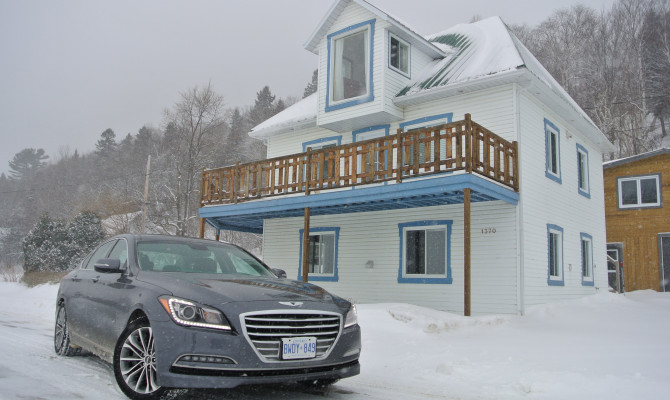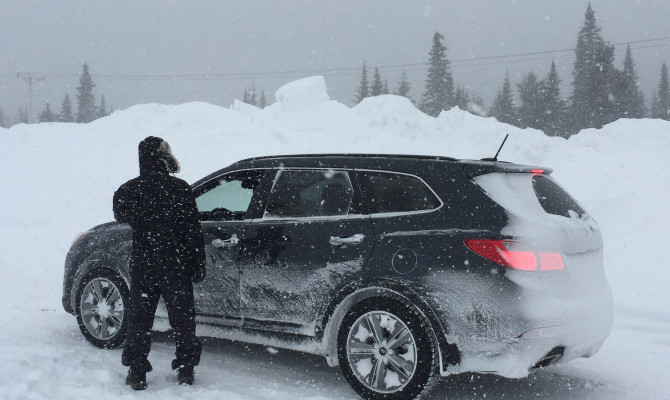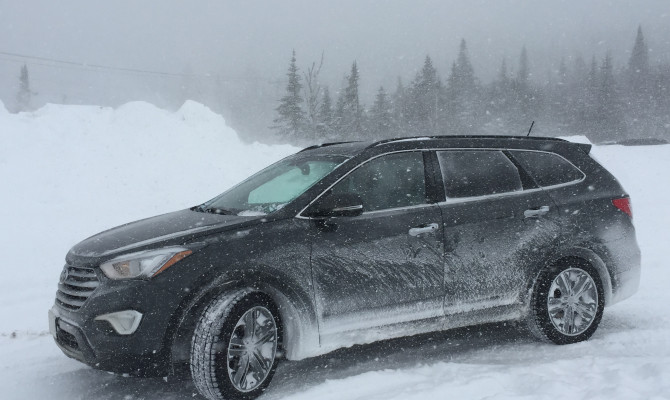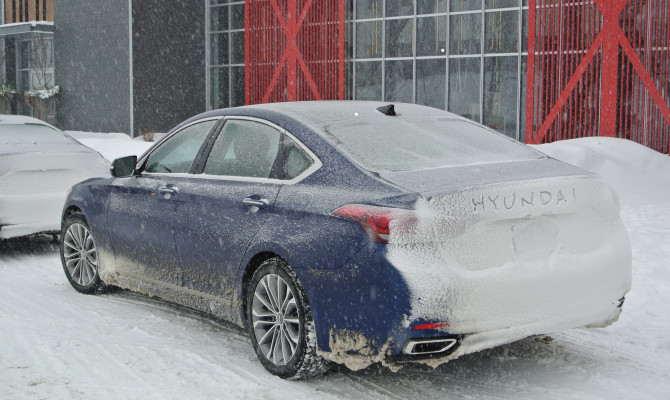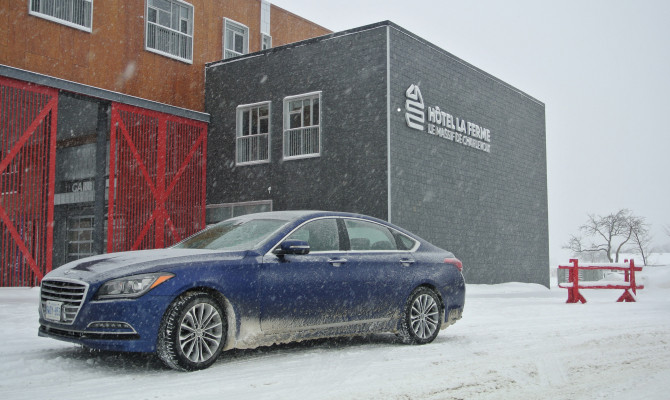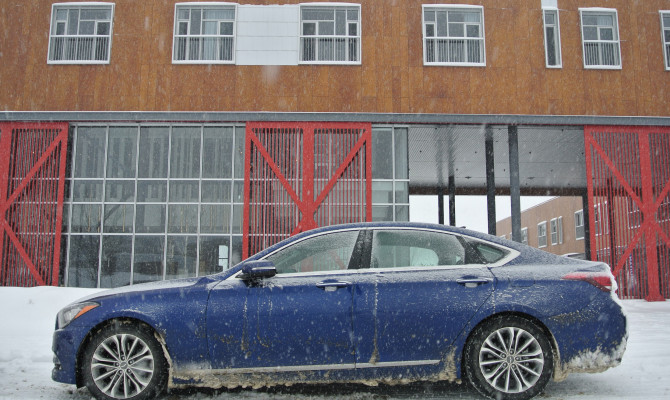“Part of winter driving, especially in these blizzard conditions, is largely about the tires.”
Baie-Saint-Paul, Quebec.
Certain car brands are synonymous with defined traits.
Say the word “performance” and you’ll likely get a group of people talking about German engineering. Say the word “safety” and chances are a certain Swedish automaker will be at the top of the list.
What brands come to mind when you think of an all-wheel drive system?
I’m guessing Japanese, also German but how about Korean?
Okay, Hyundai is not the first automaker to come to mind when it comes to their AWD technology. It probably isn’t the second or even third. That said, they’re on a mission to change peoples’ minds.
Hyundai offers two distinct types of AWD systems. One is used with platforms designed for front-wheel drive systems to enhance traction while maintaining fuel efficiency; the second is for rear-wheel drive based platforms and is programmed to increase performance while maintaining control and drivability in slippery road conditions.
I had the chance to test both them out in extreme winter conditions and Baie-Saint-Paul, Quebec, certainly delivered on that promise! – I’m not entirely sure how much snow fell in the time my driving partner and I left the hotel for our morning exercises at Le Massif de Charlevoix ski area, but it seemed like 30 centimetres or more.
No, we didn’t shuttle people up and down the mountain to prove its capabilities. A closed course was set up with more than enough ice underneath to make things very interesting.
We’d put both the Genesis sedan and Santa Fe XL Crossover to the test.
Let the slipping and sliding commence. Part of winter driving, especially in these blizzard conditions, is largely about the tires. No matter how good an AWD system controls the torque split between the front and rear axels, if you don’t have grip, well, then it can get really interesting. Like, Santa Fe XL meet the snow bank. Snow bank meet the Santa Fe XL. Luckily, this wasn’t the case.
Each vehicle had its own play area. The Genesis sedans played more on a skating rink-like surface while the Santa Fes romped in the snow. However, the icier surface was soon heavily covered in snow and visibility became quite grim. The activities were cut short but our drive route wasn’t.
The HTRAC (which stands for Hyundai TRACtion) all-wheel drive system of the Genesis did work at getting us out of some sliding situations. As a bonus for 2015, the Genesis sedans come standard with all-wheel drive. So, if you happen to find yourself stuck in a snowstorm, you need not panic.
HTRAC also has some cool features associated with it. The AWD control logic is different according to driving mode selection for enhanced drivability and efficiency.
For example, with the vehicle set in “Normal” mode, HTRAC defaults to a 40:60 rear-wheel biased torque distribution. The system can shift as much as 90 percent of engine output to the front axle in slippery conditions or 100 percent to the rear at higher speeds for reduced driveline drag and improved fuel economy.
At speed in “Sport” mode, HTRAC gives Genesis a distinctly rear-wheel drive character by sending 80 to 90 percent of power output to the rear wheels.
The latter part of the drive day was in the comfort of the Santa Fe XL (XL meaning it has a longer wheelbase, room for up to seven passengers and comes with a V6 engine.)
The AWD system in Santa Fe models incorporates Active Cornering Control (ACC), an element within the Vehicle Stability Management (VSM) system, which helps the vehicle manage acceleration in a corner. To improve traction and cornering performance, braking force is applied to the inside rear wheel when accelerating through a turn.
Regardless of which vehicle we endured the storm, it’s certain that Hyundai has a good thing going on. And even if you never find yourself in the belly of a blizzard, the piece of mind is still with you every time you get behind the wheel of these vehicles.
For more information, visit www.hyundaicanada.com
Contact: alexandra [dot] straub [at] drivewaybc [dot] ca
Recent Comments
- { Enjoyed your Forest of Bowland in the BMW X5M, particularly the photo of the BMW in front of the main part of Stonyhurst College where... }
- { Bantam designed the Jeep, not Willy's or Ford. The American military gave the original Bantam prototype to Willys and Ford to copy. There is plenty... }
- { All Escalades come with a 6.2-lilter V8 engine that produces 420 horsepower. A six-speed automatic is the only transmission offered and drives the rear wheels.... }
- { Alexandra is an excellent journalist. }
Popular Posts
- Journey to a ‘Sparkling’ Luxury Okanagan Resort “Four lucky readers will put a Dodge Journey’s weekend-...
- The Need For Speed: Hike Those Highway Limits More than half of those polled believe the province sho...
- Drives-U-Crazy… Erratic drivers. An early morning drive from Kelowna to Vancouver is nor...
- Readers Respond: The Pros and Cons of Increasing B.C. Speed Limits Increasing the speed limits will only increase risk to...
- Honda CR-V Review: The Compact Crossover To Get Things Done The CRV is a very stylish and aerodynamic crossover veh...


